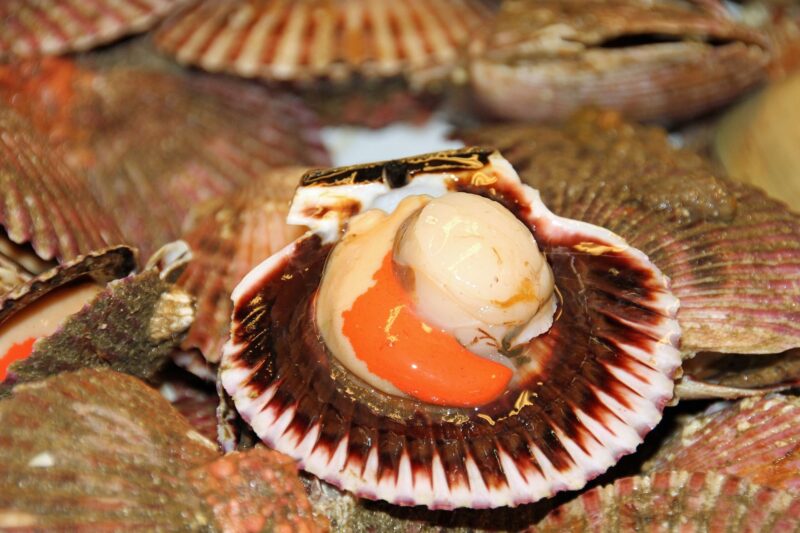Hey there! Have you ever wondered if you can enjoy the deliciousness of scallops in their raw form? Well, I embarked on a culinary adventure to find out if eating raw scallops is not only possible but also a delight for the taste buds. Let me share with you what I discovered!
- Raw scallops can be eaten and enjoyed, showcasing their natural sweetness and delicate texture.
- Choosing the right scallops is essential for safety and quality – look for “dry” and “day boat” scallops.
- Supermarket scallops may have declined in quality due to prolonged storage and treatment with sodium tripolyphosphate.
- Be cautious of potential health risks associated with raw scallops, especially for vulnerable groups.
- If you prefer to avoid raw scallops, there are delicious alternatives like seared scallops and scallop ceviche.
Health Risks of Eating Raw Scallops
When it comes to raw seafood, there are always potential health risks to consider, and raw scallops are no exception. Consuming raw scallops can expose you to harmful bacteria such as Vibrio parahaemolyticus or Vibrio vulnificus, which can lead to foodborne illnesses. These bacteria can cause symptoms like diarrhea, vomiting, abdominal pain, and in severe cases, even bloodstream infections.
While anyone can be affected by these bacteria, certain groups are more vulnerable, including individuals with compromised immune systems, pregnant women, children, and the elderly. It’s important to note that even if you’ve enjoyed raw scallops before without any issues, there is always a risk involved.
To minimize the risk of foodborne illnesses, it is recommended to thoroughly cook scallops. Searing, grilling, or boiling your scallops until they reach an internal temperature of 145°F (63°C) can help kill off any harmful bacteria and make them safer to consume.
Safe Handling of Raw Scallops:
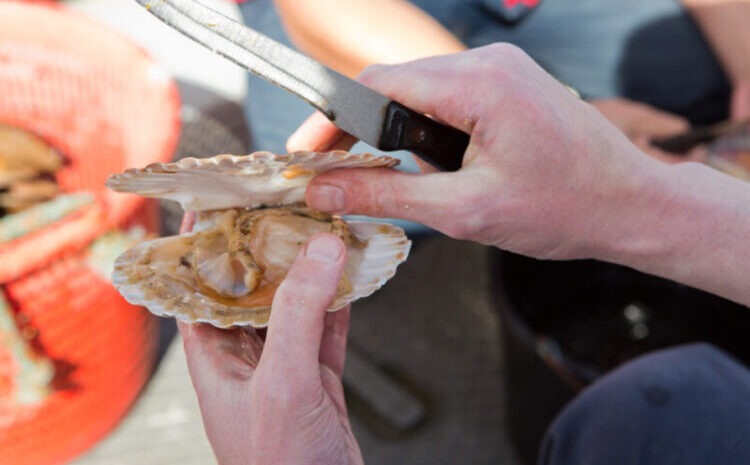
- Buy from reputable sources that prioritize freshness and quality.
- Ensure scallops are day boat scallops, harvested and brought to shore the same day.
- Choose “dry” scallops that have not been soaked in sodium tripolyphosphate or other preservatives.
- Store and transport scallops properly, keeping them chilled at all times.
- Thoroughly wash your hands and all utensils after handling raw scallops to avoid cross-contamination.
“Raw scallops can be a delicious indulgence, but it’s crucial to be mindful of the potential health risks. By following safe handling practices and cooking your scallops thoroughly, you can still enjoy these delicate seafood delights while minimizing the chances of falling ill.”
| Health Risks | Symptoms | Vulnerable Groups |
|---|---|---|
| Vibrio parahaemolyticus or Vibrio vulnificus infection | Diarrhea, vomiting, abdominal pain, bloodstream infections | Individuals with compromised immune systems, pregnant women, children, and the elderly |
Buying and Preparing Raw Scallops Safely
When it comes to enjoying raw scallops, ensuring their freshness and handling them properly is of utmost importance. Here are some key guidelines to follow:
1. Choose a Trusted Source
Whether you’re buying scallops from a local fishmonger or an online retailer, it’s crucial to choose a reputable source. Look for sellers who have knowledge about the source and handling of the scallops. This will give you confidence in their quality and freshness.
2. Opt for “Day-Boat” Scallops
Day-boat scallops are harvested and brought to shore on the same day, ensuring maximum freshness. These scallops have a shorter time between harvest and purchase, minimizing the risk of quality decline and bacterial growth.
3. Look for “Dry” Scallops
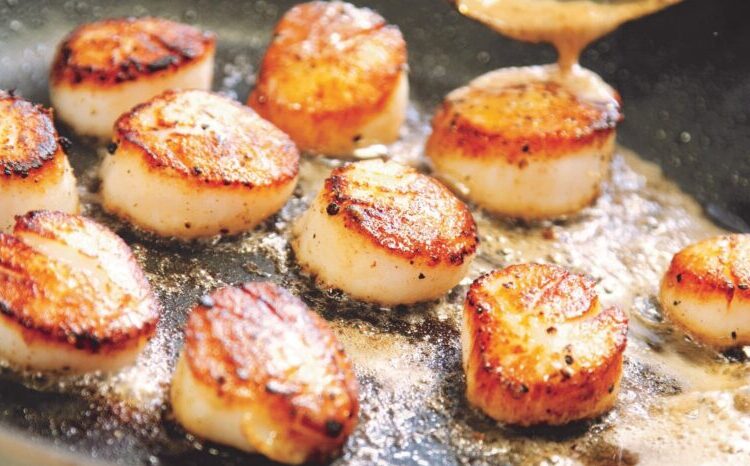
Scallops treated with sodium tripolyphosphate (STP) can absorb excess water, affecting their taste and texture. Instead, choose “dry” scallops that have not undergone this treatment. Dry scallops retain their natural flavor and are not waterlogged.
4. Handle with Care
When preparing raw scallops, proper handling is key to maintaining their freshness and minimizing the risk of contamination. Keep them refrigerated until ready to use and ensure all equipment and surfaces are clean. Avoid cross-contamination by using separate cutting boards and utensils for seafood and other ingredients.
| Benefits of Buying and Preparing Raw Scallops Safely |
|---|
| 1. Ensures maximum freshness and quality |
| 2. Minimizes the risk of foodborne illnesses |
| 3. Retains the natural flavor and delicate texture of scallops |
| 4. Provides peace of mind when enjoying raw seafood |
By following these guidelines, you can safely prepare and enjoy raw scallops. From sashimi to ceviche, raw scallops can be a delightful addition to your culinary repertoire when handled with care.
The Delightful Alternatives to Raw Scallops
If you prefer to avoid the potential health risks associated with eating raw scallops, there are plenty of delicious alternatives that you can enjoy. These alternatives not only guarantee safety but also offer a variety of flavors and textures to tantalize your taste buds. Here are some popular options:
Seared Scallops

Seared scallops are a mouthwatering alternative to raw scallops. By cooking them quickly on high heat, you get a beautiful caramelized crust on the outside while keeping the center tender and juicy. The searing process intensifies their natural sweetness, making each bite a delightful experience. Pair them with a tangy citrus sauce or a creamy garlic butter for a burst of complementary flavors.
Scallop Ceviche
For a refreshing and zesty alternative, try scallop ceviche. In this preparation, the scallops are “cooked” by marinating them in citrus juice, such as lime or lemon. The acid in the citrus juice breaks down the proteins in the scallops, giving them a tender texture and infusing them with the vibrant flavors of the marinade. Add some diced tomatoes, onions, cilantro, and a pinch of chili for a perfect balance of flavors.
Scallop Sushi Rolls
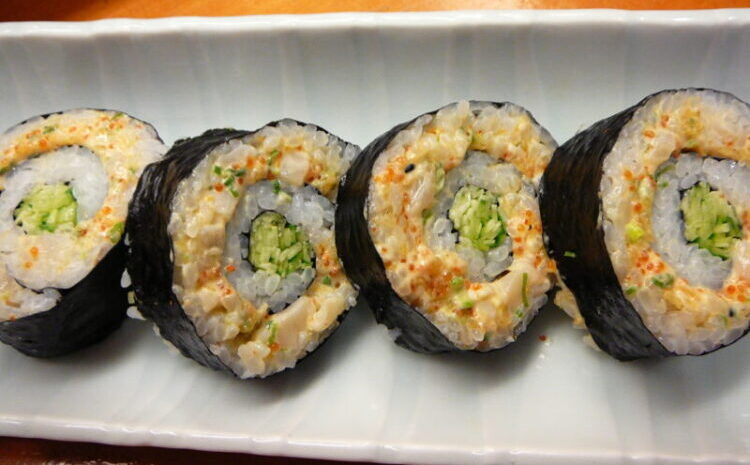
For sushi lovers, scallop sushi rolls are an excellent choice. These rolls combine raw or lightly seared scallops with other ingredients like avocado, cucumber, and spicy mayo. The combination of the creamy scallops with the fresh crunch of the vegetables and the tanginess of the sauce creates a tantalizing blend of flavors and textures. Whether you enjoy them as a classic sushi roll or a unique hand roll, scallop sushi rolls are sure to satisfy your cravings.
With these delightful alternatives, you can still enjoy the unique taste and texture of scallops while ensuring your safety. Whether you opt for seared scallops, scallop ceviche, or scallop sushi rolls, each bite will be a flavorful adventure.
| Alternative | Description |
|---|---|
| Seared Scallops | Cooked quickly on high heat, creating a caramelized crust while leaving the center tender and juicy. Enhances the natural sweetness of scallops. |
| Scallop Ceviche | Marinated in citrus juice, “cooking” the scallops while imparting vibrant and refreshing flavors. Perfect balance with diced tomatoes, onions, cilantro, and chili. |
| Scallop Sushi Rolls | Combines raw or lightly seared scallops with avocado, cucumber, and spicy mayo. Offers a unique blend of creamy, crunchy, and tangy flavors. |
Ensuring Scallop Freshness and Quality
When it comes to enjoying raw scallops, ensuring their freshness and quality is of utmost importance. Here are some tips to help you determine if the scallops you are purchasing are fresh:
- Appearance: Fresh scallops should have a plump and moist texture. They should range in color from light beige to light pink or orange. Avoid scallops that have a slimy texture or a strong fishy smell, as these can indicate poor quality or spoilage.
- Scent: Fresh scallops should have a mild oceanic scent or no smell at all. If you detect a strong fishy odor, it is best to avoid those scallops.
- Texture: Look for scallops that are firm to the touch. Avoid scallops that appear soft or mushy, as this can be a sign of deterioration.
Table: Signs of Fresh Scallops
| Signs | Indications |
|---|---|
| Plump and moist texture | Freshness |
| Light beige to light pink or orange color | Quality |
| Mild oceanic scent or no smell | Freshness |
| Firm texture | Quality |
Remember that scallops have a short shelf life, so it’s best to purchase them as close to the source as possible. If you’re unsure about the freshness or quality of scallops, consult a trusted fishmonger or retailer for guidance. They can provide you with information about the source and handling of the scallops, ensuring you make a fresh and delicious choice for your culinary creations.
By following these guidelines, you can confidently select fresh scallops that will elevate your raw scallop experience or any other seafood dish you decide to prepare.
Conclusion
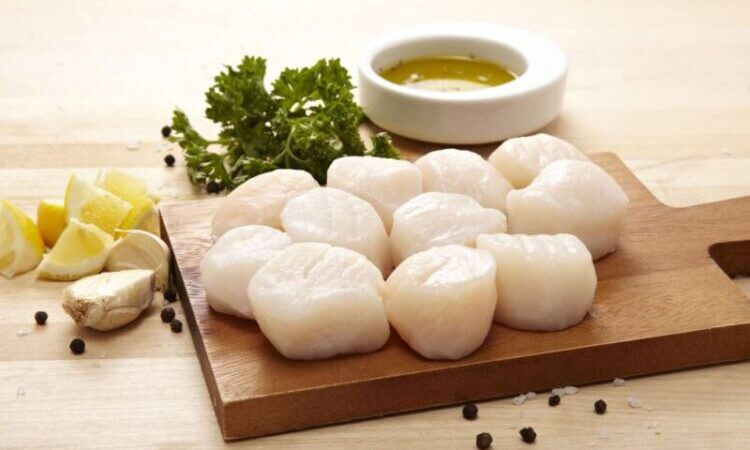
In conclusion, raw scallops can be a delightful culinary experience if sourced and handled properly. When it comes to enjoying raw scallops, choosing fresh and high-quality scallops is key. Look for “dry” and “day boat” scallops, which are not treated with sodium tripolyphosphate or soaked in excess water.
However, it is important to be aware of the potential health risks associated with consuming raw scallops. Harmful bacteria like Vibrio parahaemolyticus or Vibrio vulnificus can be present in raw scallops and may cause foodborne illnesses. Individuals with compromised immune systems or other susceptible groups should exercise caution when consuming raw scallops.
If you prefer to avoid these risks, there are plenty of delicious alternatives to enjoy scallops. Seared scallops, scallop ceviche, and scallop sushi rolls are just a few options that provide flavorful alternatives while eliminating the potential hazards of eating raw scallops.
Remember, whether you choose to eat raw scallops or opt for cooked preparations, always prioritize food safety and handle scallops with care. With the right sourcing and handling practices, you can savor the natural sweetness and delicate texture of scallops to truly enhance your culinary experience.
FAQ
Can You Eat Scallops Raw?
Yes, eating raw scallops is possible and can be a delicious experience.
Are there any health risks associated with eating raw scallops?
Yes, raw scallops may contain harmful bacteria that can cause foodborne illnesses. It is important to handle and prepare them safely.
How can I ensure the safety of eating raw scallops?
To eat raw scallops safely, it is essential to purchase them from reputable sources and ensure they are fresh. Proper handling and preparation are also crucial.
What are some delicious alternatives to raw scallops?
If you prefer to avoid the potential health risks of eating raw scallops, there are plenty of tasty alternatives such as seared scallops, scallop ceviche, and scallop sushi rolls.
How can I ensure the freshness and quality of scallops?
When buying scallops, look for “dry-packed” scallops with a firm texture. They should have a mild oceanic scent and appear plump and moist.

